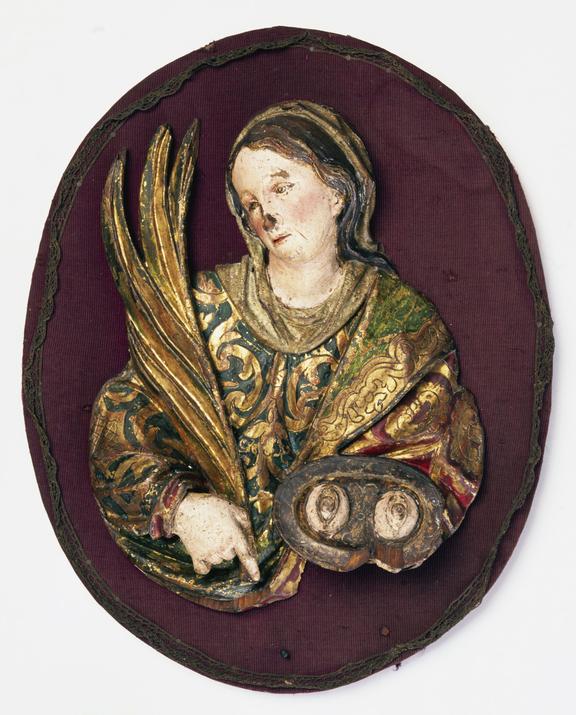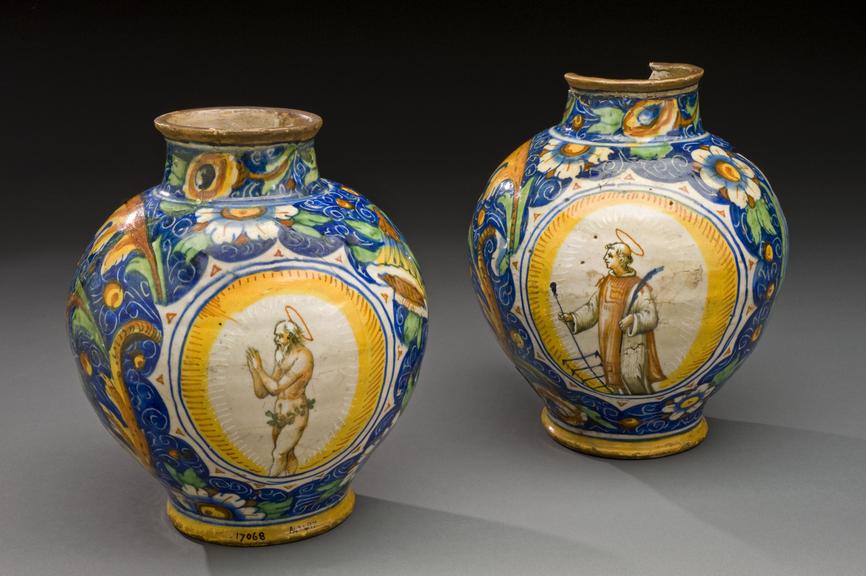Sometimes people’s daily experience is more interesting than the nuts and bolts of medicine. In the past, there was an array of choices in the medical market-place and many sought help from their family or from religion.
Many Christians have long believed that the saints are able to plead with God on their behalf and that particular saints can give protection against specific illnesses. Sometimes, a statue of a saint can tell you two things.; one – how the saint was martyred and two – what they are the patron saint of.
Take Saint Lucy:

Martyred in 304 CE for her beliefs, her eyes were removed before her death. To Christians today she is the patron saint of sight and eye diseases. But that’s not all – she is also invoked for dysentery, hemorrhages and throat diseases. Saints often multi-task.
But how did these items come to be here? Well, they’re part of the Wellcome collection that the Science Museum has on permanent loan from the Wellcome Trust. Collecting agents were partly responsible for building the collection. My favourite is Captain Johnston-Saint, who in my head is the Indiana Jones of the history of medicine.
The Captain collected a large number of these saints while travelling around France, talking to curés, priests and locating items of interest in furniture shops, people’s homes and markets. If you want to know more about the Wellcome collection check out Frances Larson’s An Infinity of Things.
Back in the present, with over 200 of these statues looking down at me whenever I venture into the room, I can’t help but think I’ve got a lot of saints watching my back.
